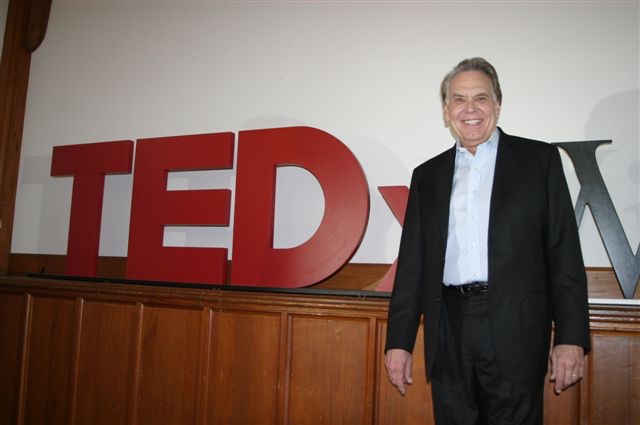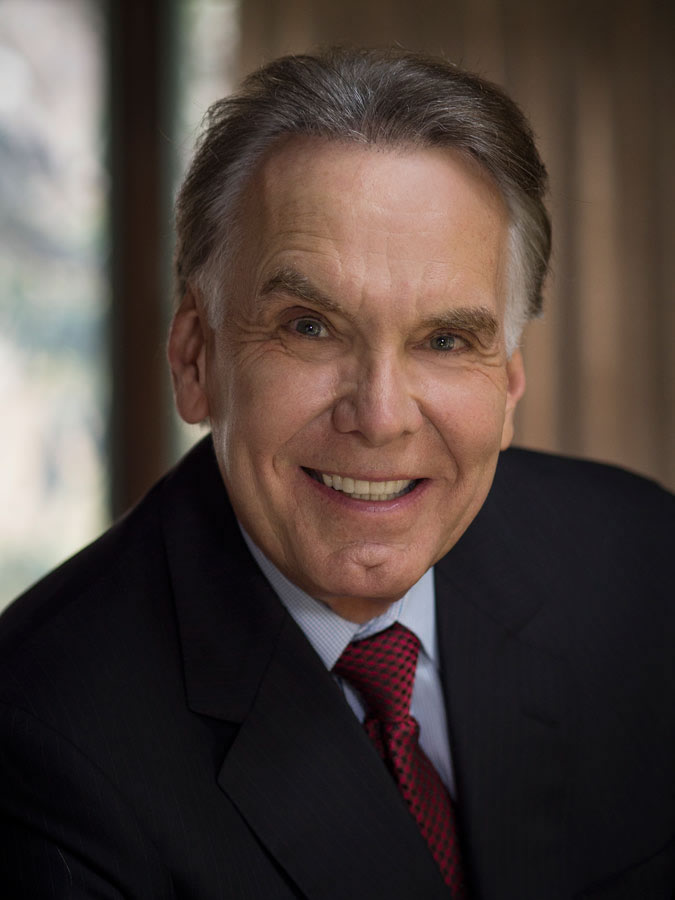Seven Lessons Learned from TEDx on Giving Breakthrough Presentations
Creating and presenting my TEDx talk was one of the greatest challenges of my career – and an ultimate learning experience.
Having a solid background in acting and speaking for more than three decades gave me the belief, or so I thought, that this would be an easy task. In fact, it tested my perseverance.
Here are the barriers I discovered and the lessons learned:
LESSON #1: Identify your passion and find your story.
Everything in life is about your narrative, the story you tell. In order to tap into your audience’s passion and motivate them to action, you must tap into your passion with your own story.
Choose your subject by answering these questions: What are you passionate about? How do you believe someone can make the world a better place by applying your ideas? What practical suggestions can you present? What is your call to action?
My first two program ideas led to blind alleys.
Initially, I wanted to present a talk on the practical benefits of hypnosis. Then I realized that the message would not resonate without a live demonstration, and I couldn’t do that within the TEDx time restriction of 18 minutes.
My second idea was about how to apply creativity. Based on my background, I thought I could shed new light on the creative process. I held on to this possibility until I watched several talks on creativity, including Ken Robinson’s TED talk on “How Schools Kill Creativity.” I simply felt I could not present a stronger talk.
I finally settled on a topic that was, metaphorically speaking, close to my heart. It centered on my open heart surgery to correct an aneurysm and replace a heart valve. Despite a hesitancy to re-live the ordeal, I knew that what I learned from dealing with my fear, surgery and healing would empower others to become a partner in their own wellness. “Harnessing the Imagination for a Wellness Strategy” was born.
LESSON #2: Watch as many TED and TEDx talks as you can and then, watch a few more.
Keeping my subject in mind, I began watching as many TED and TEDx talks as my brain could absorb. Looking back on my journal, I discovered I viewed over 100 talks!
As I watched, making notes, I learned both what worked and what did not work.
I began to develop a rough outline. My subconscious kicked in and my talk evolved, ideas popping into my head at the least unexpected times. I carried a pad with me and made more notes.
Up to this point, the investment of my time was 30 hours.
LESSON #3: Write your talk out word for word.
This was a challenge. In my corporate and public programs, I tend improvise. However, in a TED talk you must be precise, natural, and meet the time requirement. One cannot afford to “ummm” or “ahmmm” or lose your place.”
Doing my best to remain emotionally vulnerable, I began to write my story.
I did not try to edit my first draft. I simply let the words, bullet points and ideas for slides evolve.
After finishing what I thought was an acceptable script, I set a timer and read it aloud. I was shocked to discover my talk was 50 minutes! I couldn’t believe I had to cut out 30 minutes!
I wrote and rewrote the script and read it out loud more than 10 times. As I revised, I found what I hoped would be ideal locations to insert slides. These would be my guide points. I researched and found or created a supportive PowerPoint slide show.
I still did not attempt to memorize.
Investment in: 30 hours watching + 30 hours of writing and rewriting and reading out loud = 60 hours.

Creating and presenting my TEDx talk was one of the greatest challenges of my career – and an ultimate learning experience.
LESSON #4: Rehearse, rehearse, and rehearse some more.
The more you rehearse, the more self-confident you will become.
A point of note: The actor, Anthony Hopkins, once told me that he reads a script 500 times before he even starts to develop the character he is playing.
Rehearse alone
Timing myself, I rehearsed the script out loud – over and over. I discovered ways to tighten it. The more I rehearsed, the stronger the message stuck in my mind and the more comfortable I became with it.
Rehearse in front of others
Rehearsing in front of others is like dancing on a high-wire. It’s enlivening and frightening. And, it must be done. It is the ONLY way to become self-confident and prepare for your presentation.
I am a member of a theater workshop. I asked that they allow me to present in front of the membership. I had created a rough slide show to enhance my program. To my shock, the program was 45 minutes!! I was absolutely taken aback. That was more than double the time I was allowed. I encouraged feedback and, applying a few suggestions, continued to tighten up my script.
Next, I asked a local theatrical director over to my home and work with me. We went through the program three times. I was gaining confidence and control over my material.
Here is another lesson I learned memorizing. Rehearsing took me a long way to memorizing. But, there was more work to do. I clearly saw that the program could be broken down into manageable chunks. And, I could trigger my memory to recall a specific section with a keyword. For example, the word “leadership” brought back a story I tell about the power of vision and the word “attitude” would prompt me to recall study on the power of attitude and wellness, etc.
Total time invested: 30 hours of watching + 30 hours of writing and rewriting and reading out loud + 20 focused memorizing = 80 hours.
LESSON #5: Engage your audience from the beginning.
Challenge your audience. Involve them. Make them work. Ask them questions. Touch them emotionally. ENGAGE THEM FROM THE BEGINNING.
As a keynote speaker, this lesson has been cemented in my psyche for years: You have only a few moments to grab your audience. By asking compelling questions, you ignite their story. You influence them to reflect.
I used a gimmick of biting a lemon to engage their imagination on a visual and taste level. I had them raise their hands if they could imagine biting a lemon. 90% responded in a positive way. I also asked questions that would prompt them to think about their life priorities.
Here is a secret. I asked the sponsor if I could take ten minutes to warm up the audience in between the previous speaker and me. He said it had never been done but why not give it a go. I did an audience involvement exercise that created anticipation about what I had to say. Be clever in your approach.
LESSON #6: Let the audience know when you are bringing your talk to a close.
To avoid confusion in your audiences mind, it is important to give a clear indication when you are bringing your presentation to a conclusion.
Clearly indicating that you are bringing your journey to an end ramps up their engagement and sets you up to give your call to action.
LESSON #7: Give your audience a call to action.
Your TEDx talk is about spreading ideas that make a difference. If you have done your job, your audience wants to know how they can help. Based on your unique message, ask yourself, what simple, practical steps can your audience take, now, to help spread the word.
There is no better conclusion than to engage other’s to help with an idea that is worth spreading.
Follow these seven lessons for breakthrough presentations and you will make a quantum leap with your TED or TEDx talk!
Watch my TEDx talk: Harnessing the Imagination for a Wellness Strategy
James Mapes is a keynote speaker, best-selling author, coach and hypnotist. His most recent book IMAGINE THAT! Igniting Your Brain for Creativity and Peak Performance is the first web-supported book with access to 21 video-coaching clips. www.jamesmapes.com

James Mapes is the founder of Quantum Leap Thinking™, creator of The Transformational Coach™, expert on the psychology of “applied imagination,” best-selling author, highly acclaimed business speaker, consultant, seminar leader and personal excellence coach.
